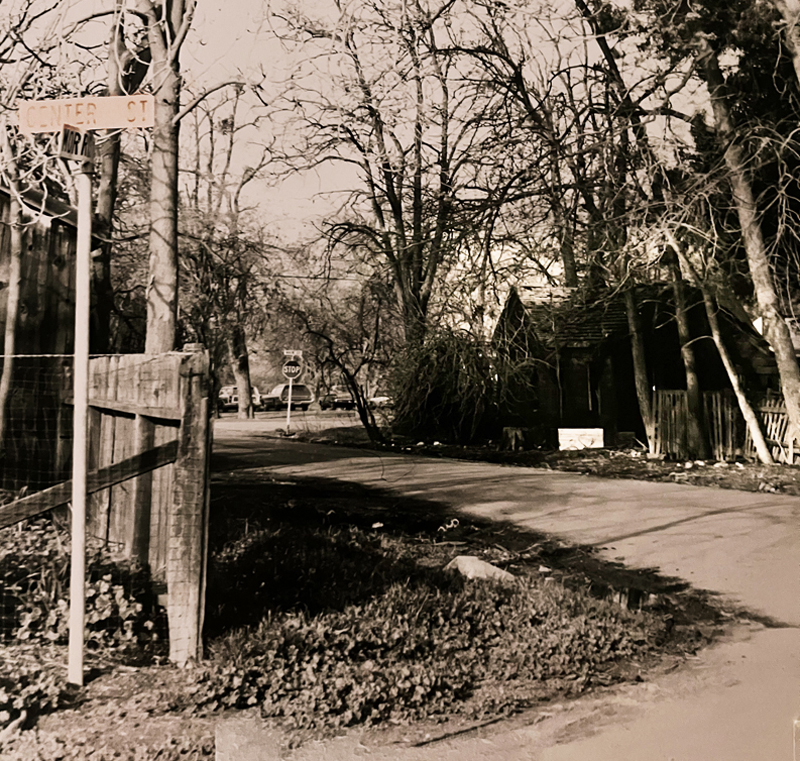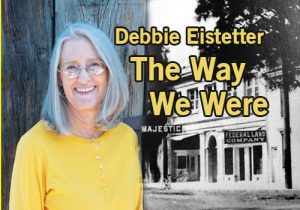Eucalyptus trees, mostly gone now, iconic of early Clayton

 CLAYTON, CA (Aug. 24, 2023) — Clayton’s grove of eucalyptus trees was the most distinctive landmark of this little town for more than 100 years. But by 1992, the remaining trees suffered from disease and were removed to create The Grove park we know today.
CLAYTON, CA (Aug. 24, 2023) — Clayton’s grove of eucalyptus trees was the most distinctive landmark of this little town for more than 100 years. But by 1992, the remaining trees suffered from disease and were removed to create The Grove park we know today.
Presently, Village Market and a bistro join the park in comprising downtown Block No. 3 as it was first recorded on the 1858 official plat map of the town.
The block still has the same borders shown on that historic map: Main Street on the north, Center Street on the south, Marsh Creek Road (formally Swann Street) on the east and Morris Street on the west.
Joel Clayton was the primary landowner in the earliest days of the town. After he died in 1872, his son sold the lots facing Morris Street to John Henry Keller. Keller owned a butcher shop in Concord. He built his home, a barn, a butcher shop and slaughterhouse on the present site of Village Market and the parking lot at Main and Morris.
‘Squatters’
Carey Mitchell was deeded the property in 1908 for $10 in tax payments, prompting one citizen to call the Mitchells “squatters.” Carey’s brother, Leslie “Doug” Mitchell, lived in the old Keller house until his death in 1972. He enjoyed telling folks he was born the same year as the planting of the eucalyptus seeds.
Neighbor Norma Bloching remembered him as “respectable and generous to everyone. We loved him, needless to say.”
Doug was always up for a chat or a game of horseshoes. He allowed the Blochings to corral their horses on his land for seven years in exchange for improvements Norma’s father made to the barn.
The Scammons family owned the neighboring four lots fronting Main Street until the 1890s. They were responsible for planting eucalyptus seeds in 1878, but they never developed the property.
Further down Main on the corner of Swann Street, another Mitchell brother, “Buck,” and G. Schwartz operated a saloon in the late 1880s. It burned down in 1905. Two old cypress trees in the park mark its former location. For many years, parents worried about the old foundation collapsing on their curious children.
Community events
By the early 1900s, Block No. 3 primarily contained eucalyptus, locusts and trees of Heaven. Some open areas remained where community activities took place. These included a popular open air dance platform made of wood called “the plaza,” a dirt go-cart track in the 1950s and varied community events like the Fourth of July holiday featuring music and contests such as a greased piglet chase for the children and greased pole-climbing for the men.
The 38 diseased eucalyptus trees removed in 1992 were 114 years old, more than 100 feet high and in danger of falling over at any time. The city of Clayton purchased Block No. 3 from private investors in 1999 and dedicated The Grove park in June 2008.
For more information or to become a member, visit claytonhistory.org. The Clayton Museum opens 2-4 p.m. Wednesdays and Sundays at 6101 Main St.. You can visit for free.

Debbie Eistetter
Debbie Eistetter has been a resident of Clayton for almost 30 years. She serves on the Board of the Clayton Historical Society and believes that history shows us the way to a more enlightened present and hopeful future. For more information about the CHS Museum please visit claytonhistory.org
